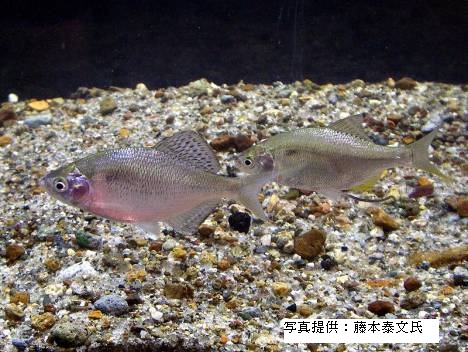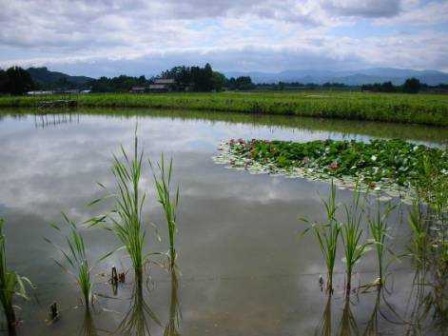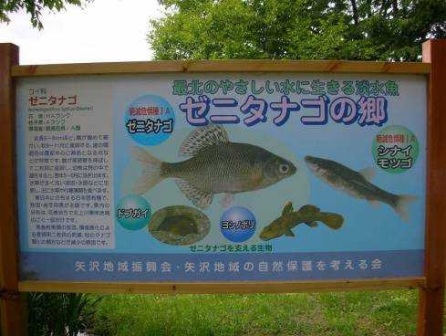
| Pseudonym reading | Welcome to the Hanamaki or Sakazunoze |
|---|---|
| Specified type | Prefecture designation |
| Type | Natural monuments and animals |
| Designated date | October 1, 2010 |
| Specified details | |
| quantity | |
| location | Hanamaki City Yazawa |
| owner | Individual |
| Holding group | |
| Management organization | Meeting to think about nature conservation of Yazawa area |
| home page |
Overview
Zenitanago is endemic to Japan and is distributed in Honshu, north of Kanagawa and Niigata (except Aomori). The number of habitats and the number of habitats have been reduced nationwide, and it is currently estimated that there are several prefectures inhabiting areas including Iwate Prefecture. In the Red Data Book), it has been designated as IA (a species with extremely high risk of extinction).
Zenitanago inhabits the environment such as shallow lakes and ponds in the plain area and waterways connected to it, and it feeds on algae and soft aquatic plants.
In Iwate Prefecture, once the distribution of Zenitanago has been confirmed by various reports mainly in the southern part of the prefecture, except for some uninvestigated areas, the places where the habitat is currently confirmed are in the Yazawa district of Hanamaki City. It is only a reservoir group.
The reasons for the decrease in Zenitanago include the reduction of bivalve molluscs by reclamation of water reservoirs and pesticides in the 70's, the conversion of waterways into concrete along with the development of paddy fields in the 80's and the disappearance of water reservoirs Etc. are mainly mentioned.
Zenitanago, who has lived with people for a long time, is about to disappear due to changes in people's lives. Under such circumstances, in the Yazawa district in Hanamaki City, we established the "Study on Nature Conservation in the Yazawa Area", and the association has led Zenitanago conservation activities. Because of this, the only Zenitanago population is maintained in the prefecture, and it is rare that the population of such a population is maintained nationwide.
Zenitanago (top) Photo courtesy of Yasufumi Fujimoto
image


